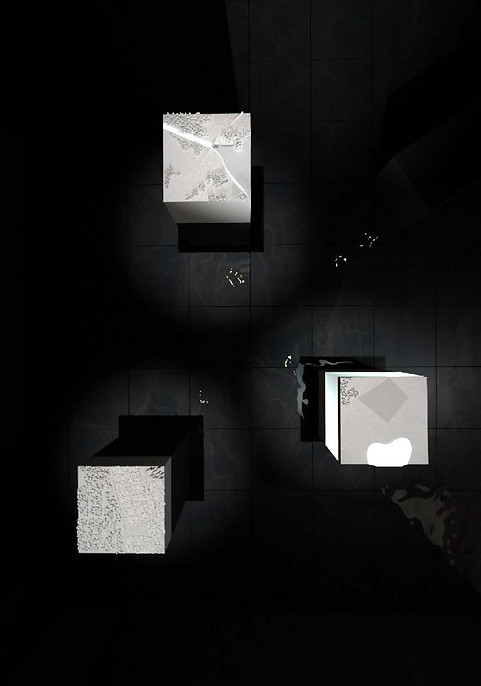According to UNESCO, among other alarming data, approximately 2 billion people worldwide—equivalent to 26% of the global population—lack access to safe drinking water. Moreover, the acceleration of the hydrological cycle, with increasing frequency of extreme droughts and floods, not only affects human communities but also places significant pressure on ecosystems, with detrimental consequences for non-human species. Uruguay joins the list of international examples highlighting the climate crisis, particularly the water crisis, and the various actors and traces involved. In this context, we respond to the Intelligens. Natural. Artificial. Collective call as an opportunity to rethink architectural practice in relation to water, as a chance to relearn the commons and explore new strategies for co-designing our cities and our relationship with the environment.
Our anthropocentric view of water, focused on land and objects, has historically limited our understanding of its dynamics. We have designed our territories thinking from the perspective of the land, not the water. Dilip Da Cunha, in collaboration with Anuradha Mathur, argues that we expect rains and storms to end before delineating the river’s boundaries, much like Google Earth removes clouds to capture aerial images. In flood situations, for example, we assume that it is the water that crosses the line, rather than considering that the line itself could be drawn differently. We design based on a specific moment in the water cycle, what we consider “real,” leaving other moments in the realm of the ephemeral—these are the moments of greatest transformative power of water. Yet events such as monsoons, rains, droughts, and floods are an integral part of reality for many vulnerable communities. It is, therefore, about understanding the intelligence of water in its multiple forms and states; recognizing the diversity it contains in order to reveal how architecture, humans, non-human beings, and objects are all part of a shared whole.



-
NATURAL: The proposal is to “flood the pavilion” as a curatorial action that places water at the center of the spatial experience. This gesture positions water as a connector between the visitors and the exhibition, which is composed of various “intelligences of water.” To achieve this, a 1 cm-deep reflecting pool is proposed, allowing visitors to walk across it.
-
ARTIFICIAL: Three critical scenarios are presented in which water and architecture come into friction, generating tensions across different social, economic, and political realities. Through models representing three fragments of territory, three case studies are highlighted and analyzed: 1. The Guaraní Aquifer System, 2. Urban watercourses, and 3. the Paso Severino Reserve.
-
COLLECTIVE: A audiovisual and editorial project is proposed in the months leading up to the submission. This project aims to create a documentary and a catalog that bring together the voices, actors, and traces involved in the work and study of water. In this way, visitors can immerse themselves in a dynamic spatial experience, enhanced by the reflection of images on the water.

COMMON WATER
INTELLIGENCES IN FRICTION
STATEMENT

INTELLIGENCE OF WATER

#CURATORIAL PROPOSAL



These models represent the “critical zone,” as defined by Latour, understood as the space between the lower atmosphere and the rocky substrate where life unfolds. This perspective invites us to think in terms of networks of relationships rather than isolated surfaces or objects. Each of these scenarios makes visible the social, economic, and political tensions inherent in human interaction with water, illustrating the complexities of water bodies and human interventions across different levels and scales. These tensions reveal various aspects of water’s natural intelligence and encourage reflection on how architecture can engage in dialogue with it, rather than impose constraints, thereby promoting a systemic, circular, and situated approach.


#CASES


Curatorial team: Alejandro Varela, Mariángeles Longo, Maria Clara Sala, and Francisco Cerain.
Technical team: @NAU Adriana Piperno, Franco Teixeira de Mello and Lucia Arimon.
Italian team: @fluidiforme Antonino Caridi and Davide Casaletto.

